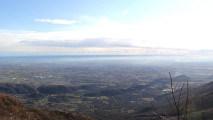In the swampy area that stretches between the towns of Caneva and Polcenigo, in the municipality of Pordenone, downstream of the river Livenza, is located the dwelling site of Palù di Livenza. This is a site populated since ancient Paleolithic (4900 BC approx.). Excavations have revealed three different types of structures that testify to a pile-dwelling settlement of the place until the late Neolithic period. Many stone and ceramic objects and tools have been found (the archaeological remains found at the site are now preserved in the Archeological Museum of Friuli Occidentale).
The Palù is part of the Prehistoric Pile Dwellings around the Alpine area, along with other 18 Italian places distributed in Piemonte, Lombardia, Veneto and Trento. The inscription on the UNESCO list is the best way to protect the prehistoric remains still present in the basin, but also an opportunity to bring to light the site and its particular form of human settlement that is the result of human adaptation to a specific habitat. But the Palù di Livenza, as well as for its archaeological peculiarities known since 1800, is also a place of great natural beauty, home to several species of animals and plants.

June 17 | 0

June 17 | 0

June 17 | 0

June 17 | 0

June 17 | 0

July 18 | Comments Off

July 14 | Comments Off

July 13 | Comments Off

July 13 | Comments Off

July 12 | Comments Off

July 12 | Comments Off

June 17 | 0

June 17 | 0
Copyright Comune di Caneva (PN) - 33070 - Piazza Martiri Garibaldini, 8
P.Iva: 00229040936 | info@palu.incaneva.it








